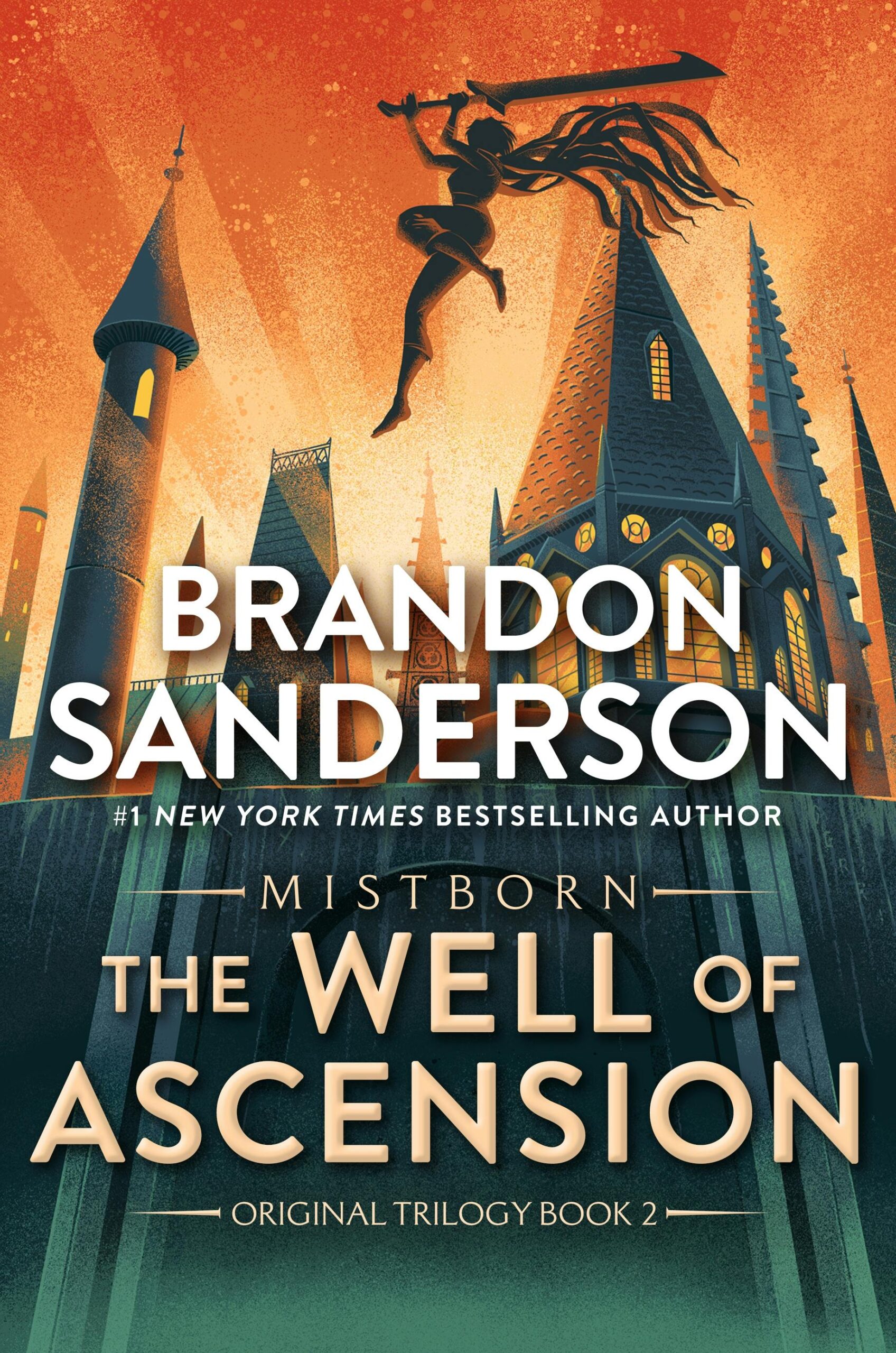
The Well of Ascension
25
by Sanderson, BrandonVin, a naturally light sleeper due to her harsh upbringing in thieving crews, awakens abruptly to a warning bark from her kandra companion OreSeur. Reacting instinctively, she grabs her Allomantic metals and obsidian daggers, only to find Tindwyl, a Terriswoman, entering her chamber. Tindwyl reveals her intention to take Vin shopping for a dress to wear during her upcoming meeting with Straff Venture, King Elend’s father. Though Vin initially resists, citing her preference for practical attire, she reluctantly agrees after Tindwyl appeals to her sense of propriety for the important encounter.
The interaction highlights Vin’s lingering discomfort with noble customs and her defensive instincts, shaped by her traumatic past. Her skepticism toward Tindwyl’s motives reflects her distrust of authority figures and unfamiliar social expectations. Despite her reluctance, Vin recognizes the strategic value of presenting herself appropriately in front of Straff Venture, a powerful political adversary. The scene underscores her internal conflict between her identity as a street-smart survivor and her evolving role as a noblewoman.
As Vin prepares to leave, she reflects on her unexpected life in Keep Venture, a far cry from the squalid alleys of her youth. Zane’s recent taunts about her place in noble society weigh on her mind, amplifying her self-doubt. The grandeur of the keep contrasts sharply with her “ash-stained alleyway” skills, making her question whether she truly belongs in this world. These thoughts linger as she heads to meet Tindwyl, OreSeur faithfully at her side.
The chapter concludes with Vin approaching the grand southern entryway, where Tindwyl awaits. The opulent surroundings serve as a constant reminder of the social divide Vin must navigate. Though she remains wary of Tindwyl’s intentions, she acknowledges the necessity of adapting to noble conventions, even as she grapples with her past and uncertain future. The tension between her instincts and her new responsibilities sets the stage for further personal and political challenges.
FAQs
1. How does Vin’s background as a street urchin influence her current behaviors and mindset in this chapter?
Answer:
Vin’s traumatic childhood in thieving crews has left lasting impacts that manifest in multiple ways. She remains an extremely light sleeper due to needing to protect herself in unsafe environments, as shown when she instantly awakens and arms herself when Tindwyl enters. She also maintains distrustful habits like sleeping with hidden daggers and avoiding metal reserves overnight due to poisoning risks—practical survival tactics from her past. The chapter highlights her internal conflict about belonging in noble society, with Zane’s comments making her question whether her “ash-stained alleyway” skills fit in Keep Venture’s grandeur. This tension between her past identity and current station creates psychological friction.2. Analyze the power dynamics between Vin and Tindwyl in their interaction. How does each assert control?
Answer:
Their exchange reveals a subtle struggle for authority. Tindwyl employs indirect dominance by entering unannounced, framing shopping as inevitable (“You’ll want a suitable dress”), and issuing directives (“Bathe and change”). Vin resists through physical posturing (crouching with daggers), verbal defiance (“I don’t take commands”), and minimalist responses (nodding/shaking head). Tindwyl ultimately gains compliance by appealing to social expectations (“meet Straff Venture in trousers?”) and offering choice as illusion (“come if you wish”). The dynamic shifts when Tindwyl softens her tone, showing strategic flexibility. Vin’s eventual agreement suggests she recognizes the pragmatic value of Tindwyl’s guidance despite disliking imposed structure.3. What thematic significance does Vin’s reflection on Keep Venture’s opulence hold in this chapter?
Answer:
Vin’s contemplation of the keep’s stained glass and grand archways underscores the novel’s recurring theme of identity displacement. The contrast between her past (hovels, alleys) and present (noble halls) mirrors her internal dissonance—she physically inhabits this space but psychologically remains an outsider. The imagery highlights how environments shape self-perception; the “beautiful hallway” symbolizes skills/values she lacks, deepening her insecurity. This moment also critiques class systems: the keep’s design (coaches entering to “protect nobles from elements”) reinforces privilege Vin still finds alien. Her awareness of this disparity foreshadows ongoing struggles to reconcile her origins with her role in Elend’s world.4. How does Sanderson use OreSeur’s minimal presence to characterize Vin’s relationships?
Answer:
OreSeur’s silent, observational role emphasizes Vin’s isolation. His single warning bark and shrug reflect functional loyalty without emotional connection—a stark contrast to Kelsier’s mentorship. Their transactional dynamic (Vin thanks him perfunctorily) mirrors how she engages with most characters: guarded, with bonds based on utility rather than affection. This subtly reinforces her difficulty forming attachments after childhood trauma. Notably, OreSeur witnesses but doesn’t mediate her conflicts (e.g., with Tindwyl), underscoring that Vin navigates social challenges alone. His passive presence amplifies her self-reliance while hinting at unmet needs for deeper companionship.
Quotes
1. “Vin was a very light sleeper—a heritage from her youth. Thieving crews worked together out of necessity, and any man who couldn’t guard his own possessions was considered to be unworthy of them.”
This opening line establishes Vin’s survival instincts shaped by her traumatic past, showing how her street upbringing continues to influence her behavior even in noble surroundings.
2. “She didn’t sleep with metals inside of her; many of the Allomantic metals were, to some small extent, poisonous. It was unavoidable that she’d have to deal with some of that danger, but she had been warned to burn away excess metals at the end of each day.”
This reveals important world-building about Allomancy’s risks and Vin’s disciplined approach to her powers, showing her growing mastery while maintaining vulnerability.
3. “They were more … ash-stained alleyway kinds of skills.”
This poignant reflection captures Vin’s central internal conflict - her struggle to reconcile her brutal past with her current noble position, questioning whether she truly belongs in this new world.
4. “You may come with me if you wish—the choice is yours. However, do you really want to meet with Straff Venture in trousers and a shirt?”
Tindwyl’s diplomatic challenge highlights the political realities Vin must navigate, forcing her to consider how appearances affect power dynamics in noble society.
